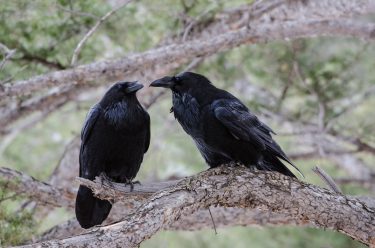
For over a century, speciation — where one species splits into two — has been a central focus of evolutionary research. But a new study almost 20 years in the making suggests “speciation reversal” — where two distinct lineages hybridize and eventually merge into one — can also be extremely important. The paper, appearing March 2 in Nature Communications, provides some of the strongest evidence yet of the phenomenon in two lineages of common ravens.
“The bottom line is [speciation reversal] is a natural evolutionary process, and it’s probably happened in hundreds or almost certainly thousands of lineages all over the planet,” said Kevin Omland, professor of biological sciences at University of Maryland, Baltimore County (UMBC) and co-author of the new study. “One of our biggest goals is to just have people aware of this process, so when they see interesting patterns in their data, they won’t say, ‘That must be a mistake,’ or, ‘That’s too complicated to be correct.’”
The University of Washington’s John Marzluff, professor of wildlife science in the School of Environmental and Forest Sciences, also contributed to the research and says, “It is fascinating to me that this complex history of raven speciation has been revealed. For decades, my students and I held and studied ravens throughout the West and never once suspected they carried evidence of a complex past. Thanks to collaborations among field workers and geneticists, we now understand that the raven is anything but common.”
See also:
- The Washington Post: “Ravens mated another species into oblivion, their twisted family tree shows“
- The Guardian: “Two become one: two raven lineages merge in ‘speciation reversal’“
- National Geographic: “Ravens Are Evolving, and Not in the Way You’d Expect“

